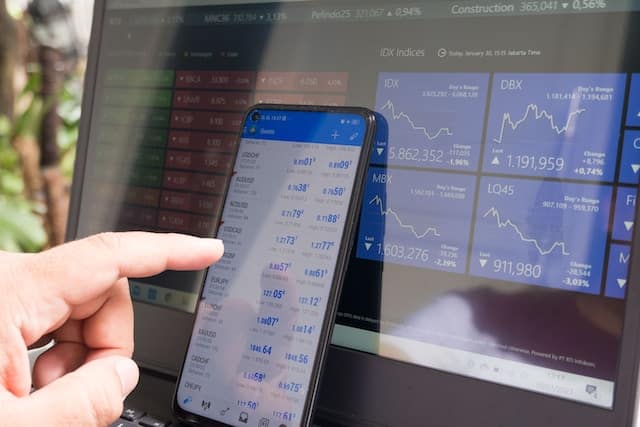Great Britain’s Pound and the European Euro are major players in Europe’s economy. However, the structure of these two currencies is different. The GBP is a national currency while the Euro serves an entire continent. The strength of the GBP in Europe influences trading transactions across Europe, especially with currencies whose value is lower. However, the volatility of the GBP, especially against international shocks, makes it more unstable, making the Euro a preferred currency across Europe. A good example is the Brexit referendum.
Euro as a currency was commissioned in 1995 but acknowledged in 1999 by the world financial markets. Up to date, it is the second most traded accounting and exchange currency in the world. Out of the 27 member states of the European Economic Union, 23 are fully accredited its use. On the other hand, the GBP holds position 4 on the trading index among world currencies. It is used in the United Kingdom and British Crown Countries and Territories. The GBP holds the record of the oldest currency traded continuously.
The Relationship between the euro and GBP
The breakdown
Whereas the smallest accounting Unit of the GBP is pennies, the Euro has the Cents. They both are divided into 100 parts i.e., 100 pennies for GBP and 100 cents for euros.
Strength versus value
Despite the Euro having stronger trading links than the GBP, the GBP’s nominal value is higher than the Euro. The demand in the international market sets the currency strength, while the value of a currency is based on purchasing power and the stability of the primary economy. This relationship is only rivalled by the euro and dollar trading in Europe.
Existence
GBP traced its roots back in the 8th century. The British Empire adopted the sterling as its mode of exchange. The Euro was adopted in 1995 and was consequently recognised in 1999 as a medium exchange. Its reach spreads among the European countries and the world.
Influence
Being 2nd and 4th largest traded currencies respectively in the world, they form a currency summit that dictates the strength of the world’s economy. They determine the IMF’s drawing rights.
What’s the highest pound to euro ratio ever?
Thanks to the trade agreement by the European Economic Union, the relationship between these two currencies has been stable. However, the demand for the pound sterling increases against the Euro, the rate increases. Such occurrences are prompted by the depletion of the GBP reserves in the European Bank. The highest recorded ratio is on May 3rd, 2020. The Euro traded €1.752 against the Pound.
The last four years
- 2016 – The highest GBP to the Euro ratio was 1.365, while the lowest was 1.106. The yearly average was 1.220. Money supply was elastic this year, with record highs and lows the same calendar year. It can be attributed to the uncertainties occasioned by the Brexit vote.
- 2017 – 1.197 was the highest, while 1.079 was the lowest. The average was 1.140. The ratio was relatively stable as the fluctuation rate was contained.
- 2018 – The average for the year was 1.129, while the lowest and highest tallied ratio was 1.157 and 1.100, respectively. It indicates the stability of the economy in Europe.
- 2019 – The highest ratio was 1.204 on December 12th, while the lowest 1.027 on August 10th. The average for the year was 1.139. It was due to the uncertainty occasioned by the lack of a deal as the cessation period elapsed.
Will the pound get stronger against the euro?
The relationship between GBP Euro cannot be foreseen in the short run. However, economists can predict the future of forex markets, 5 to 10 from now. 3 factors have a direct impact on the future of the British Pound against the Euro.
The coronavirus global pandemic
The respiratory virus has ravaged Europe, either by depleting reserve resources or setting up preventive measures. The demand for both Euro and Pound cannot be equated on the same scale as intervention measures are handled separately by each government. Trading arrangements have reduced drastically due to the closure of international markets. The ratio is relatively stable in this regard.
However, the European Bank and International Monetary Fund have received loan proposals for funding from countries across the world. Due to limited reserves, demand and risk are spread across nations, effectively hindering the pounds euros comparison in the short run.
Brexit approach
There was not substantive deal emanating from the Brexit referendum in June 2016. There were 3 points of concern within this ratification; Laws governing all European nations, EU customs Union and the single market treaty. Teresa May led government’s proposal of friendly withdrawal was thwarted by the British Parliament, effectively derailing the process. Although the United Kingdom will not participate in any European Policy meetings, they can agree on their commercial engagements.
The UK formally left the European Union on January 31st, 2020, but are still members of the EU’s customs union and trade arrangements. They have until December 31st, 2020, to forge a working mechanism. These agreements will significantly determine the interest rates on Britain borrowing from the European Bank, consequently affecting the pound to euro exchange rate.
Post coronavirus
The world’s economy has been affected wholly. All the major trading formations (predominantly the G8 and BRICS countries) have been reduced, effectively hindering any short term pound to euro forecast growth. This provides a fresh opportunity for these two currencies to develop their capacities individually. The Euro has the demand muscle, while the GBP has the purchasing power influence.
If the United Kingdom rises from ashes smooth and fast, the ratio between the currencies will go back to normal and even increase in the long run. If the UK strike a favourable deal with the European Union on trade, their Pound can increase in value since the UK has a favourable Balance of Payment.
What’s the best euro rate?
The introduction of the Euro into the market experienced some upheavals, as it was the first currency in the world from an economic union. The susceptibility was on adoption by the member states, reaching its lowest in March 2000. However, Europe began embracing it with time, as more countries began ratifying their Financial Acts to recognise the Euro as a medium of exchange. It began to rise steadily in subsequent years.
The highest recorded Euro exchange rate gain against the top 5 currencies was in July 2008. This was on December 29th. In effect, it meant that the strength of the currency could create a commercial advantage for countries in Europe against other regions. However, it did not last long at the pick, thanks to the economic depressions.
Summary
Although the structure of the Euro gives it a broad demand base of over 440 million people and 27 states, its acceptability lies in assimilation by member countries. This makes the expansion of the Euro a political move rather than a commercial necessity. Also, the domination of the United States Dollar in world trading affects its development and assimilation. More people and institutions prefer direct exchange from their mother currency to the US Dollar.
The growth of the European economy after the coronavirus pandemic may usher in a new proposition between the GBP and the Pound. Both will need their institutional capacity to regain their stand on international commercial arrangements. Whether the continent will witness a high or low ratio, it is left for the political establishments and economic planners to decide.






Leave a Comment